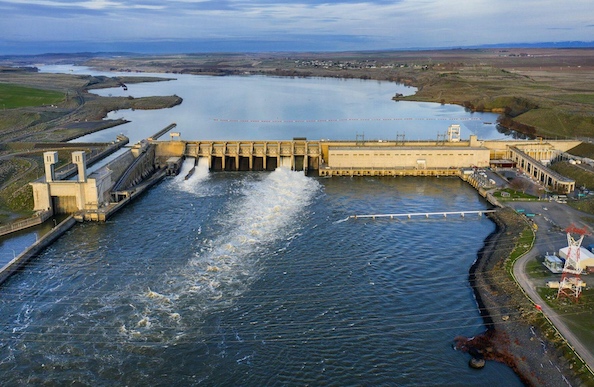forum
library
tutorial
contact

Replacing Dams' Power
Will Take Smart Planning
by Nancy Hirsh
Yakima Herald-Republic, April 24, 2022
|
the film forum library tutorial contact |

|
Replacing Dams' Power
by Nancy Hirsh
|
No energy system is designed to last forever.
 Sen. Patty Murray and Gov. Jay Inslee are examining how our region could replace the services of the federal lower Snake River dams as part of a comprehensive strategy to restore salmon and steelhead in the Columbia River Basin.
Sen. Patty Murray and Gov. Jay Inslee are examining how our region could replace the services of the federal lower Snake River dams as part of a comprehensive strategy to restore salmon and steelhead in the Columbia River Basin.
Replacing their power output is an important priority. The region must maintain an electricity system that is reliable, affordable and free of greenhouse gas emissions.
The key is smart planning. The lower Snake River dams provide important energy services that are increasingly variable due to climate change-impacted water conditions. The four dams provide about 10% of the Bonneville Power Administration's system.
Power output from the lower Snake River dams can be replaced with clean energy technologies that are rapidly declining in cost and will better serve future regional energy needs. Just since 2018, the costs of clean energy technologies have dropped by about half, and are expected to decline further. Customer demand is anticipated to increase in the summer when the lower Snake River dams produce the least energy.
A diverse set of clean energy technologies (a combination of wind, solar, storage, and targeted energy efficiency) will serve the region better, especially in late summer and during weather-driven peak conditions.
No energy system is designed to last forever. Replacing generating resources is not new or unusual. Almost 30 years ago, the region replaced the Trojan Nuclear Plant. Today, utilities across the West are replacing coal generation with clean energy to save customers money and reduce emissions. We recognize that the hydro system is complex and comprehensive replacement portfolios will need to be sophisticated and innovative. But utilities regularly plan for changes in their power generating resources or big changes in their customer base.
Replacement resources are available and affordable. Our region is undergoing a rapid buildout of clean energy resources to meet our climate goals and increases in customer demand. Clean energy project developers are ready and waiting to build their projects. Northwest utilities are planning to install approximately 18,000 MW of new renewables, customer-side resources, and storage by 2030 -- several multiples of the output of the lower Snake River dams.
Expanding deployment of customer-side resources, such as energy efficiency, demand response, and rooftop solar panels, will reduce the amount of electricity we need to generate. The cheapest generation resource is the one we don't have to build. In addition, better regional coordination and expanded markets are creating a more integrated electrical grid across the West, improving our energy system.
The bottom line is this: for Snake River salmon and steelhead to recover to healthy, fishable levels and be resilient to climate change, scientists recommend a free-flowing lower Snake River. With thoughtful and strategic planning, the energy benefits of the four lower Snake River dams are replaceable with affordable, clean, reliable alternatives. Once policymakers make a decision to remove the dams, the region can begin the comprehensive planning process for replacement resources that will result in a more modern and equitable energy system with abundant runs of Snake River fish.
All statistics and facts can be found in NWEC's paper "Smart Planning will Drive Replacing the Power from Lower Snake River Dams" at bit.ly/YHR-dams
Related Sites:
Lower Snake River Dam Replacement Study
Smart Planning Will Drive Replacing the Power from Lower Snake River Dams NW Energy Coaliton, 2/22
learn more on topics covered in the film
see the video
read the script
learn the songs
discussion forum
